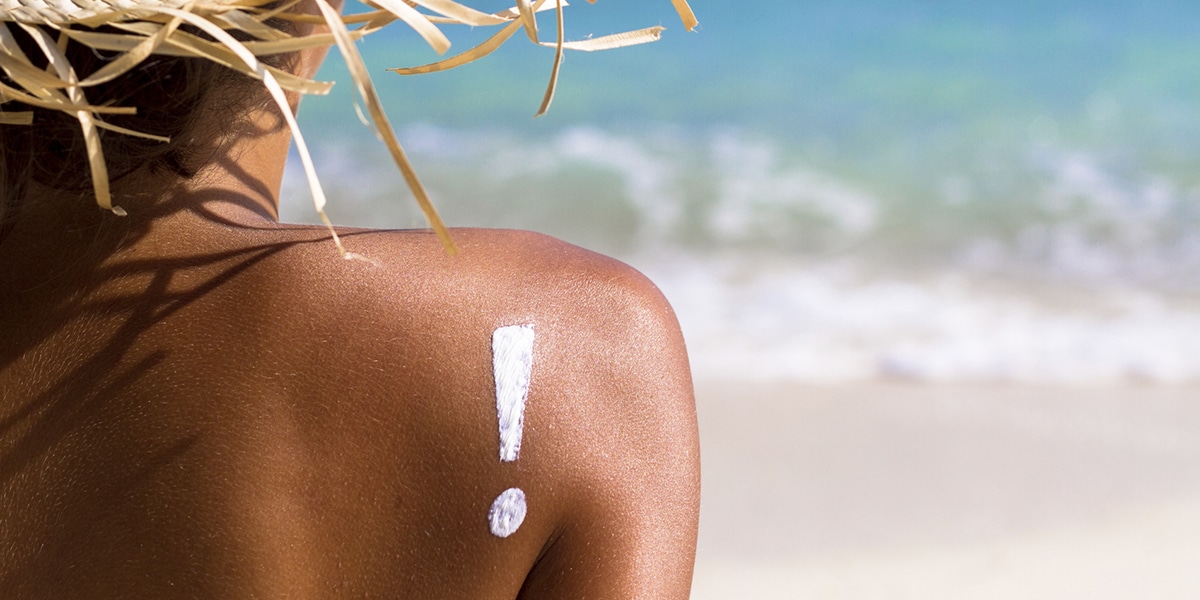It’s easy to walk into a drugstore and be overwhelmed by the number of sun care products for sale. You may ask yourself, “Is SPF 30 good enough? Or should I go for SPF 50?” “What does broad-spectrum mean?” “Should I choose a lotion or a spray?” No need to worry. Today, we’re tackling the most confusing parts of sunscreen shopping with our top 6 sun care tips.
1) SPF 30+
The sun emits two types of ultraviolet radiation that pose a threat to our skin: UVA and UVB rays. The main culprits behind sunburn are UVB rays. SPF stands for Sun Protection Factor, and indicates how effectively a sunscreen protects against harmful UVB rays. SPF 30 blocks 96.7% of UVB rays, while SPF 50 blocks 98%. SPF 50 doesn’t offer that much additional protection compared to SPF 30, so as long as you’re opting for sunscreen with an SPF of 30 or higher, you’re making a safe choice.
2) Broad-spectrum
UVA rays are responsible for premature aging, and SPF does not account for the amount of protection offered against UVA rays. Since UVA rays can pass through glass, adding a daily moisturizer with broad spectrum protection to your morning routine is a good idea if you want to ward off wrinkles and sagging skin.
3) PhotostableThe active ingredients in certain sunscreens break down upon exposure to UV radiation; in other words, when the product is on your skin and you’re exposed to the sun. Sunscreens with photostable active ingredients don’t break down as easily when exposed to the sun’s rays, offering you better protection. But, be careful! Just because your sunscreen is photostable doesn’t mean it isn’t necessary to reapply it regularly.
4) Water-resistant
If it’s humid outside, or if you’re planning an activity that involves swimming or sweating, your best bet is to opt for a water-resistant product. Sunscreens offer water resistance for up to 40 or 80 minutes, but it’s wise to reapply after swimming or excessive sweating, even if it hasn’t been 40 or 80 minutes since you applied sunscreen in the first place.
5) Formulation
When possible, opt for lotion over sprays and powders. According to the FDA, spray sunscreens may not be as effective as lotions. When using spray sunscreens, it’s difficult to guarantee that all dispensed sunscreen is applied to the skin. This is especially hard with clear or invisible spray sunscreens.
6) Special usesFor acne-prone skin, try an oil-free sunscreen. Less oil on the face can mean fewer breakouts later on. Tip: some oil-free sunscreens may be labeled as “non-greasy”.
For kids or individuals with sensitive skin, try a mineral-based sunscreen. While sunscreen should be avoided altogether in infants younger than 6 months old, sunscreen is incredibly important for toddlers and children. Childrens’ rapidly-growing skin cells are at an especially high risk for sun damage including skin cancer later in life.
Avoid products labeled as “tanning oil” or “suntan lotion”. While some tanning sprays and lotions may indicate an SPF of 10 or less, this is nowhere near the recommended SPF of 30. To face the facts, there is no safe way to suntan.
Having trouble keeping all of this information straight? Don’t worry – the Sun Index Sunscreen Checklist makes it easy to shop for sunscreens. Simply use the app to scan the barcode of a sunscreen, and the Sunscreen Checklist will let you know the sunscreen’s key features.



